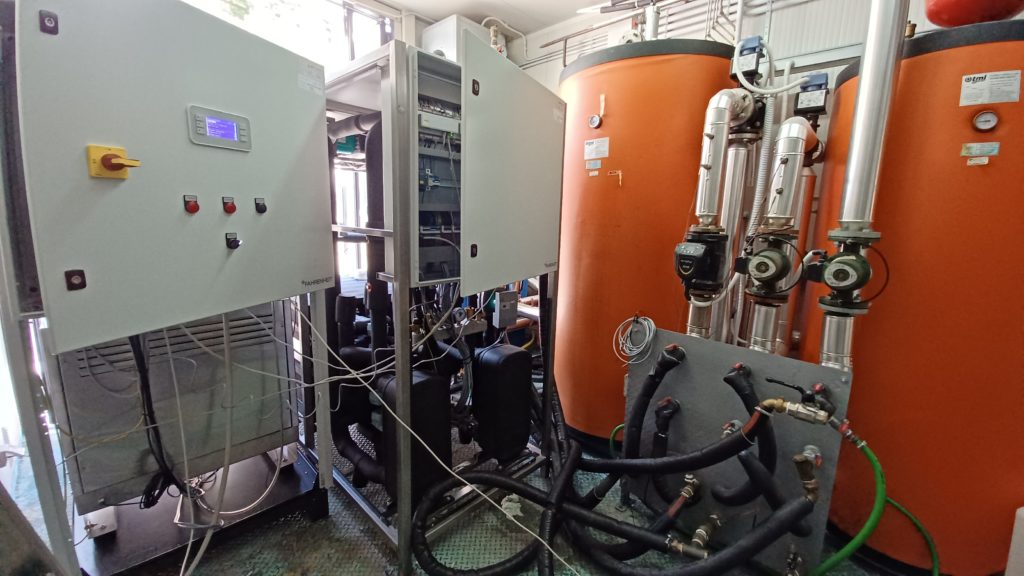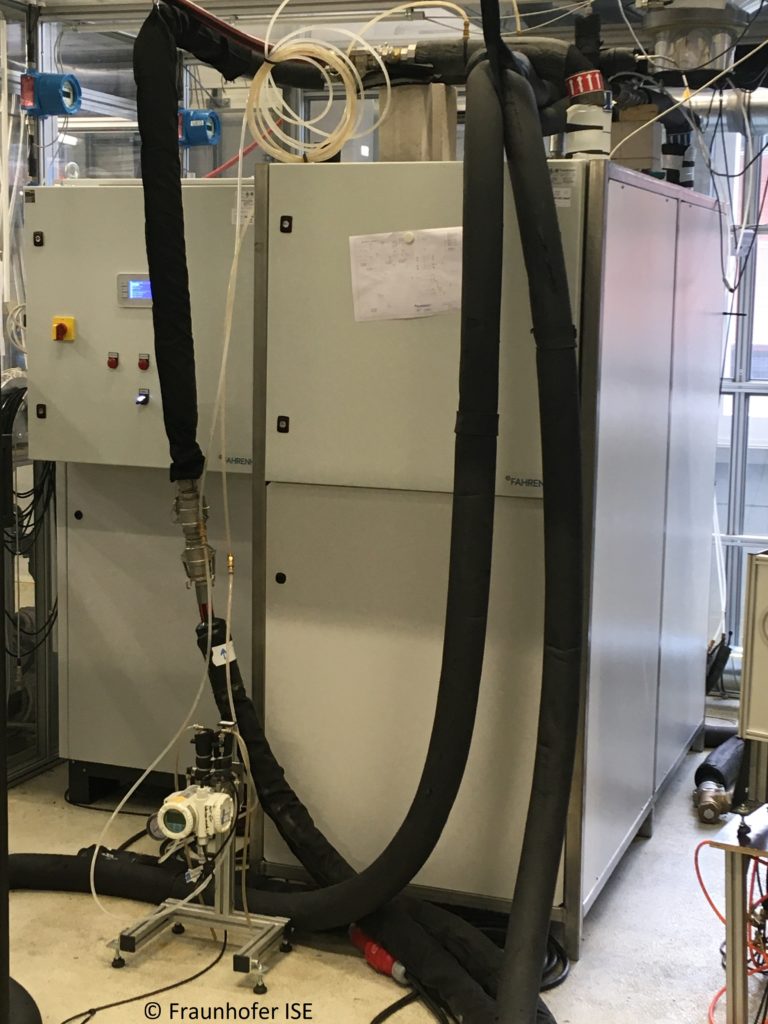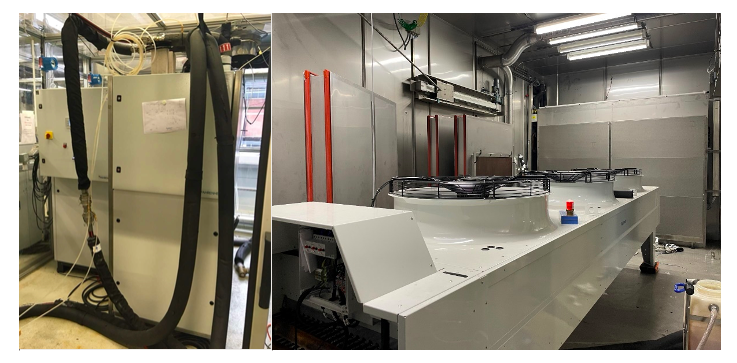Over the last months the hybrid chiller unit ZEO M 10 HCN 30 developed by Fahrenheit GmbH has undergone intensive testing and improvements. The chiller unit is the “little sister” of the hybrid chiller ZEO M20 HCN 60 that will be commissioned beginning of next year in Sunhorizon’s demosite in San Cugat (Spain): its cooling power has been reduced by 50% to meet the power and space requirements of the laboratory environment of CNR ITAE in Messina (Italy) and Fraunhofer Institute of Solar Energy Systems ISE in Freiburg (Germany).
The combination of adsorption and compression chiller technology within one single machine offers a higher flexibility and broadens the range of operation both for lower chilled water temperature and higher ambient temperature. Whereas the hybrid chiller has been tested according to existing standards for different part load conditions with the re-cooling unit placed in a climatic chamber, the main focus of the experiments at CNR-ITAE was on the operation and control strategy in bivalent mode (adsorption and compression working in parallel).
Apart from the experimental results a valuable outcome was to gain experience in the transport, installation, and commissioning of the newly developed hybrid chiller and to have first users outside Fahrenheit to operate the machine.
Figure 1: Hybrid chiller (left) and re-cooling unit (right) in the TestLab Heat Pumps and Chillers at Fraunhofer ISE, Freiburg, Germany. The re-cooler was placed in a climatic chamber to simulate different ambient temperatures. The measurements are carried out based on EN 14511:2018 and EN 14825:2018 for Hybrid Chillers.

Figure 2: Hybrid chiller under testing at CNR-ITAE lab placed in the Centro Prove building in Messina, Italy. The measurements were performed by simulating cooling load thanks to properly controlled external circuits. The full hybrid mode was validated with a specific focus on the optimization of the management strategy, to maximise the achievable savings during real operation in the demo site.




